|
Next I removed the raw water heat exchanger to clean out the calcium
deposits which form in the tubes which form the heat exchanger. I
replaced the heat exchanger in 1995 due to corrosion causing the salt
water inlet tube to fracture from the body of the heat exchanger. I have
cleaned it out periodically with Meuratic Acid (pool acid) in 1998, 2000
(kwaj), and now in 1994. In each case none of the tubes were completely
plugged, however, the exit of the tubes to the exhaust were
significantly calcified. This is caused by the salt water temperature
exceeding about 140F which cases the calcium to deposit on the walls of
the tubes significantly restricting the ability to cool the engine. The
indication that this was becoming an issue was a 5-10F increase in
engine temperature under heavy load (2450 - 2650RPM). After removing the
heat exchanger take the end plate off, drain completely and then SLOWLY
pour the Meuratic Acid into the heat exchanger. Once full allow to sit
for a couple of minutes (until it stops foaming), pour out the acid and
repeat until no further bubbling is observed. Pour out the acid, rinse
with water and pour in a mixture of baking soda (Sodium Bicarbonate) and
water to neutralize the remaining acid. Reassemble the heat exchanger
with a small amount of silicone sealant on the rubber gasket and end
plate threads to prevent leaking salt water on the motor mount directly
under the heat exchanger
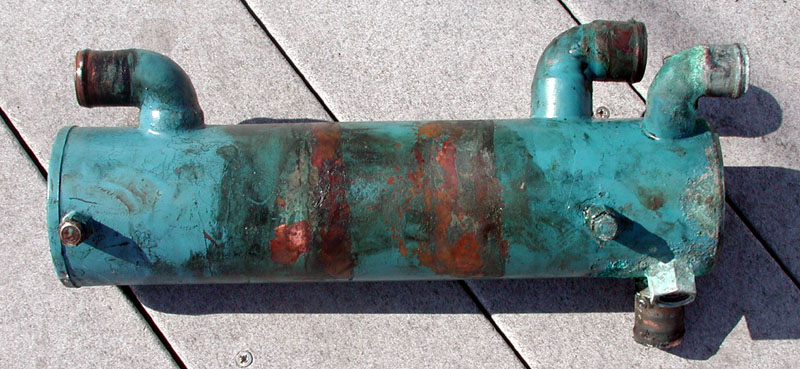
This is the bottom of the heat exchanger as it came out of the engine
room
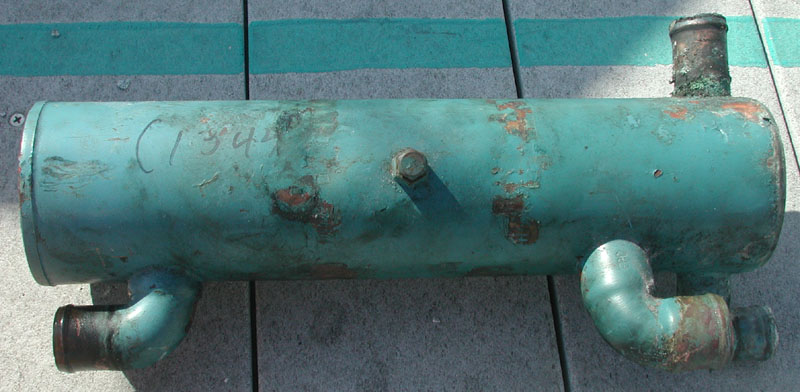
This is the top of the heat exchanger as it came out of the engine room
.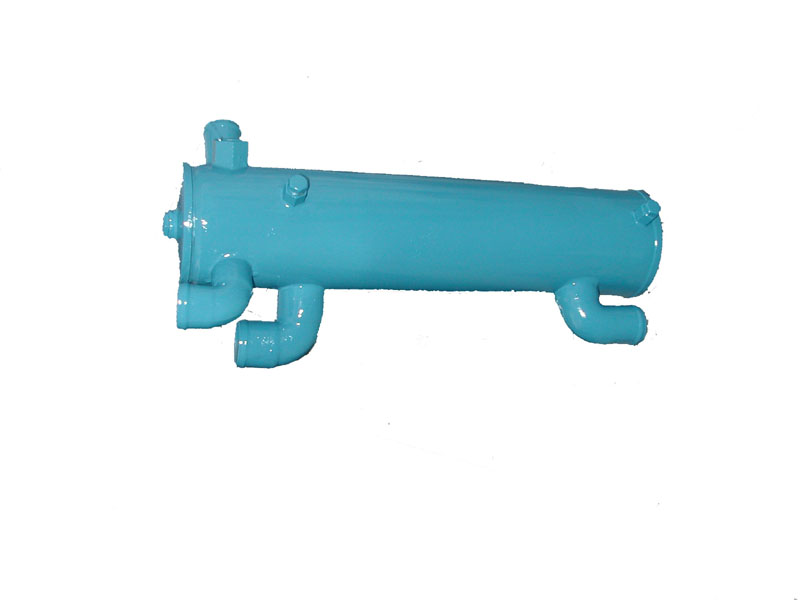
After cleaning and painting the heat exchanger looks much better!
|
|
Click on the following images for high resolution versions with more
detail.
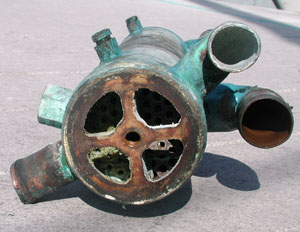
Open endplate of the heat exchange
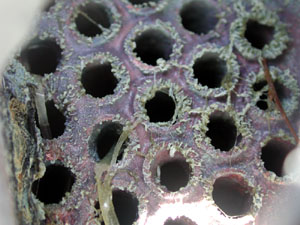
The input side of the heat exchanger, as the salt water temperature is low
at this end of the heat exchanger the buildup is pretty minor
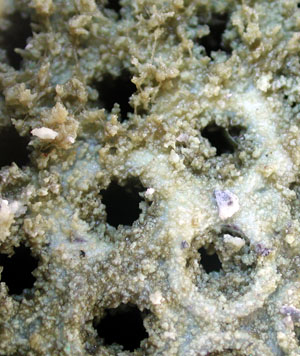
The output side of the heat exchanger, at this end of the heat
exchanger the temperature of the salt water is much higher. Above about
140F the deposits become severe over time
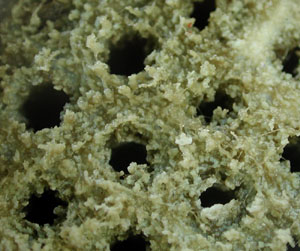
A close up of the output of the heat exchange
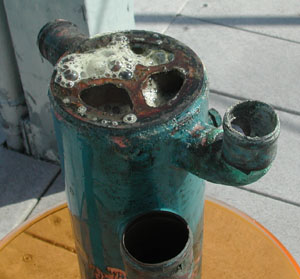
The pool acid dissolves the calcium deposits without damaging the heat
exchanger if the acid is not left in too long
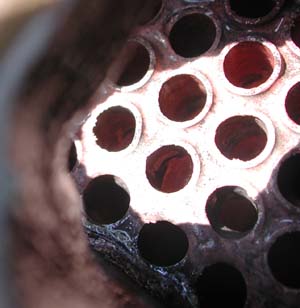
After the pool acid cleans out the heat exchanger I examined the tube
stack for damage, especially galvanic corrosion. The zinc pencil in the
end of the heat exchanger is there to protect it.
|